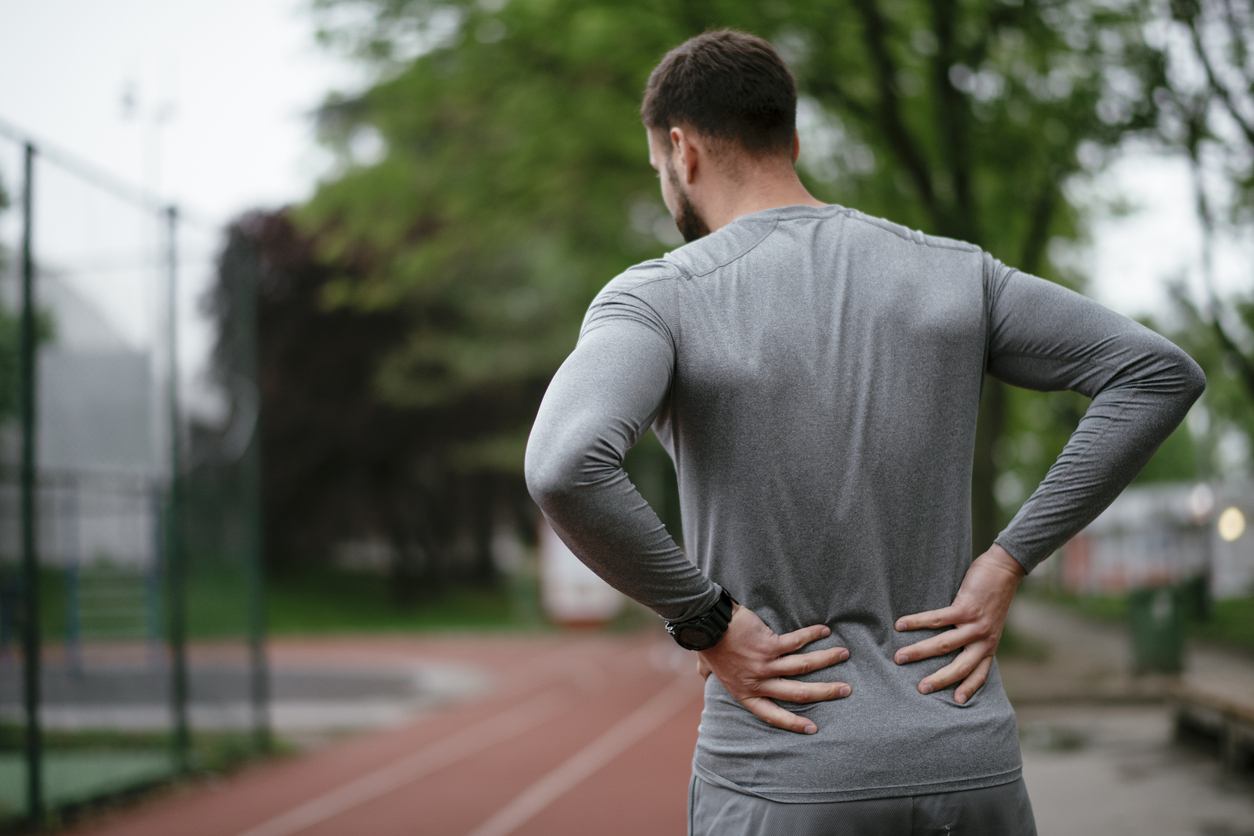Have you ever felt low back pain? Is your lower back pain relatively infrequent, or do you experience a sore, achy back on a regular basis? No matter what kind of back pain you experience, you’re in good company. Nearly 80 percent of the population suffers or will suffer from low back pain at some point.
The pain can be more than just unpleasant. For many experiencing low back pain, it can radiate to other parts of the body, causing intense muscle spasms and the inability to move around or even leave their bed.
Why does my lower back hurt?
So many things can cause our lower back to hurt. A simple sneeze can throw someone’s back out. It could be from an old injury, overexertion, or even from doing nothing at all. A majority of lower back pain is caused from improper biomechanical motion and can be fixed. Sometimes, low back pain will resolve itself entirely on its own.
Common causes of lower back pain
Back pain occurring from biomechanical motion is due to physical activity. Either a particular activity leads to the issue, or conversely, a lack of daily activity causes your back to not be prepared for the sudden demand exerted on it.
Issues created by either form of activity result in:
- Strains and sprains: Most lower back pain falls into this category. You overstretched a back muscle and strained it, or tore a tendon, resulting in a back sprain. Strains and sprains occur from lifting something incorrectly, using improper form to lift a heavy object, or from overextending your reach.
- Herniated or ruptured discs: Discs herniate or become ruptured usually due to a fall, sports injury, weight lifting activity, or accident. The pain starts right after the incident and may cause tingling or numbness in your legs.
- Sciatica: Sciatica causes sharp lower back pain that radiates down through your butt and legs due to a compressed sciatic nerve. This usually occurs after a herniated or ruptured disc.
- Pregnancy: Pregnant women often voice their lower back pain. Muscles and ligaments stretch as the baby and belly grows, putting excessive weight on the back.
How do I relieve my lower back pain?
The first step to relieving lower back pain is understanding the cause. Did you suffer from a fall or accident? Lift a bit too heavy at the gym? If you think you’ve suffered a major injury, schedule an appointment with your primary care provider.
But if the think you pulled a muscle or suffer from a generally sore lower back, your pain can be treated at home with stretches and exercise as well as virtual physical therapy.
Rest may seem like the best short-term plan to recovery, but in fact the opposite is true. Laying around and not doing anything can cause the muscles to tighten up, causing more pain. Stay active and go about your daily routine as much as possible.
Stretches for your lower back
- Bridges – Lie on your back with your knees bent and your feet touching the floor. Raise your hips, keeping your back in a straight line with your knees and shoulders. Hold for six seconds, repeat the stretch 8 – 12 times.
- Knee to Chest – Lying on your back, put your feet flat on the floor. Bring your right knee to your chest while keeping your left foot in place. Hold for 15 – 30 seconds before lowering your right knee back down. Repeat with the left leg. Perform two to four repetitions with each leg.
- Press-up Back Extensions – Roll over to your stomach and place your elbows right underneath your shoulders and your hands flat on the ground. Push down on your hands and lift your shoulders away from the floor. Hold for 5 – 10 seconds. Repeat 8 – 12 times.
- Bird Dogs – With your hands and knees on the floor, both shoulder and hip width apart, keep your back straight and your stomach tight. Lift your right leg, extend it straight behind you, while reaching out with the opposite arm and hold for 5 seconds before lowering both back down. Repeat with the left leg and right arm. Perform 8 -12 reps per leg.
Strengthening your core for lower back pain
A strong core provides a solid base to avoid lower back injuries. The muscles around the core, hips, and glutes should be strong to help prevent back injuries. The following exercises can help strengthen your core:
- Partial Crunches – Start by laying on the floor with knees bent. Place your hands behind your head or cross your arms around your chest. Flex your core and raise your shoulders off the ground as you breathe out. Hold for one second before lowering back down. Repeat 8 -12 times.
- Mountain Climbers – Start in a plank position; elbows and forearms on the ground, angled inwards to form a triangle. Raise your left knee and left elbow off the ground and touch them near your core. Repeat on the right side. Perform for 30 seconds.
- Flutter Kicks – Lay on the floor with your legs out straight and your arms at your sides. Raise both legs up into the air and “flutter” them, like you’re swimming. Perform for 30 seconds.
Virtual physical therapy for low back pain
If you’ve performed stretching routines and made an honest effort at strengthening your core but lower back pain persists, schedule an appointment with a virtual physical therapist. A PT will address the problem and create a customized stretching and exercise plan, if applicable, to reduce your back pain. The best part? Virtual PT can be done without leaving your home and is just as effective at reducing pain than in in-clinic visit. Schedule now to get back on your feet!

